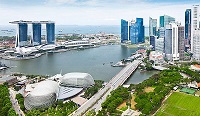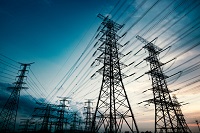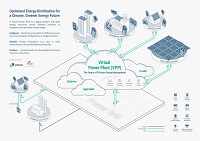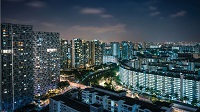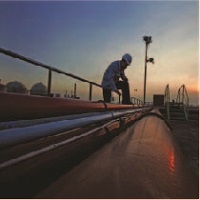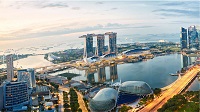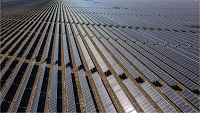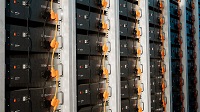A Singapore Government Agency WebsiteHow to identify
Official website links end with .gov.sg
Government agencies communicate via .gov.sg websites
(e.g. go.gov.sg/open).Trusted websites
Secure websites use HTTPS
Look for a lock ( )or https:// as an added precaution. Share sensitive information only on official, secure websites.
Mr Yoshifumi Matsumura, Vice Minister for Economy, Trade and Industry
Dr Fatih Birol, Chief Economist, IEA
Mr Hidetoshi Nishimura, Executive Director, ERIA
Distinguished Guests,
Ladies and Gentlemen,
- Let me extend a warm welcome to all of you, especially our overseas guests. EMA is pleased to partner the IEA and ERIA in organising this workshop on “Energy Prospects in Southeast Asia”.
- With a population base of close to 600 million and a formidable combined economy, Southeast Asia’s energy needs have been growing steadily over the years. In the last two decades, energy demand in the region grew by more than 4% per annum.[1]
- What will the energy outlook be like in 2009? These are perilous times, but especially so for those in the business of forecasting. At this time last year, energy suppliers across the region were straining to meet demand for their products in a high price environment. Many analysts had predicted a continued surge in the upward trend region’s energy demand. But no one could have anticipated the subsequent unfolding of events. What started off as a financial crisis in the US has developed into a synchronous global recession. Hopes of a decoupled Asia have faded as economies across the region grapple with the impact of the slowdown.
- As a result, the energy outlook in Southeast Asia has changed dramatically. Energy demand for both industrial and domestic use has tapered off. Coupled with the tightening of credit worldwide, several power producers are now reconsidering their options for new projects or deferring their commissioning dates. In Singapore too, we saw electricity demand at the start of the year drop sharply, to levels below that in 2007. Electricity prices have also fallen with the plunge in oil price and the contraction in demand.
- No one can tell when the market will bottom out. But while the immediate outlook is gloomy, the long-term picture of a dynamic Asia remains underpinned by sound fundamentals. When the region recovers, the growing needs for energy will inevitably run into supply constraints, due to the lack of investments in new production capacity. Hence, in the longer term, I believe that countries will still be confronted with high energy prices. This will no doubt precipitate a return to the scramble for scarce energy resources.
- Amidst this backdrop, Southeast Asian countries are all searching for sustainable energy solutions. Many have adopted measures to reduce their dependence on fossil fuel imports and to optimise their indigenous resources. For example, Philippines, one of the world’s largest exporters of coconut, is producing bio-diesel for transport with coconut as feedstock. Laos is making use of hydropower, not just as a source of clean energy but also a source of foreign exchange earnings through energy sales to Thailand.
- As a small city-state, Singapore has no energy resources of our own. All our electricity is produced from imported fuel oil or natural gas. Hydro, geothermal and tidal power are also not available here. To address our energy challenges, we have put in place several strategies.
- First, we are diversifying our energy sources to enhance our energy security. An immediate priority is to bring in liquefied natural gas (LNG). This will add diversity to the sources of supply of gas besides our piped gas supplies from our neighbours. Beyond this, we have few alternatives for fuel diversification. For example, solar power has some potential, but it is still not very efficient and cannot provide more than a small proportion of our energy needs. Nevertheless, we are not ruling out any option. Technology is progressing steadily, and new possibilities may well emerge in the future.
- Second, we are stepping up our efforts to increase energy efficiency. The Government has set up an Energy Efficiency Programme Office (E2PO) and developed a comprehensive national energy efficiency plan, reaching out to the power generation, industry, transport, building, and household sectors. This includes raising awareness in energy conservation measures, building capability in energy management, and exploiting R&D in energy efficiency technologies.
- Third, we are developing and test-bedding new energy solutions. Last year, EMA initiated a pilot project aimed at transforming an offshore island, Pulau Ubin[2]into a “green” island powered by clean and renewable energy. The project includes a consultancy study to develop a micro-grid system to tap on energy sources like solar, wind and biomass. To give our test-bedding efforts a further push, EMA has launched a S$25 million Energy Research and Development Fund. We will be calling for proposals soon, and hope to tap on the wealth of ideas in the energy community to generate new and innovative solutions.
- Ultimately, energy solutions must be delivered within the broader context of a coherent sustainable development plan. Strengthening the nexus across energy, water, urban planning and infrastructure development will be the key in preparing Singapore as well as other countries in the region for a carbon constrained world. In this endeavour, no single country will have all the answers. To succeed, we must work together and strengthen our framework of energy cooperation.
- In Southeast Asia, our long-term goal is an integrated ASEAN energy market, underpinned by a Trans-ASEAN Gas Pipeline (TAGP) and an ASEAN Power Grid (APG). ASEAN Senior Energy Officials have been working with stakeholders on these initiatives. The implementation of this infrastructure will enable the free flow of electrons and gas molecules within ASEAN, contributing to a more inter-connected regional energy market, and to our collective energy security.
- Given ASEAN’s dependence on external petroleum resources, we must ensure the physical availability of oil and oil products to respond quickly to any emergencies. It is with this in mind that the new ASEAN Petroleum Security Agreement or APSA and its Annex on Coordinated Emergency Response Measures (CERM) were signed at the ASEAN Summit in Thailand earlier this month. The new APSA sets out options for member countries to supply oil and gas products to those facing critical shortages on a voluntary and commercial basis.
- ASEAN energy officials are also working on a regional network for nuclear energy and safety matters. With growing energy demand in the long-term and concerns over climate change, nuclear is increasingly being explored as an alternative to traditional sources of energy. In fact, several Southeast Asian countries have announced plans to build nuclear power plants. It is therefore timely to look at ways to ensure the safe and sustainable use of nuclear in the region.
- Besides formal cooperation within ASEAN, there is a need for closer collaboration amongst countries to share expertise and experiences, and develop pragmatic and workable solutions. Last year, EMA launched the Singapore International Energy Week (SIEW) as a platform for policy makers, academics and industry players to exchange ideas on energy options and strategies. This year, we are planning the SIEW from 17 to 20 November, right after the APEC Summit. The event will include a trade exhibition, the Clean Energy Expo Asia, which will bring together leading players in the areas of renewable energy, energy efficiency and sustainable development.
- The energy challenges we face around the world are more complex and multi-faceted than ever before. Within Southeast Asia, we will have to grapple with many of these common challenges, as well as issues unique to our part of the world. I am therefore glad that the 2009 World Energy Outlook, which will be launched at the SIEW in November, will include a chapter devoted to the region. Your contributions and insights at this workshop will provide key inputs to shape the content of this chapter. On this note, I wish you all a fruitful and productive session and a pleasant stay in Singapore.
Uncertain and Volatile Times
Ensuring Sustainable Energy Solutions
Forging Regional Cooperation
Conclusion
[1] United Nations Economic and Social Commission for Asia and the Pacific (UNESCAP) figures
[2] Pulau Ubin is an island situated off the northeast coast of Singapore. It is home to about 100 villagers and is popular as an adventure getaway for nature lovers and enthusiasts
